Discover 11 hidden attractions, cool sights, and unusual things to do in Blacksburg (United States). Don't miss out on these must-see attractions: Lane Stadium, Hahn Horticulture Garden, and English Field. Also, be sure to include Blacksburg Farmer's Market in your itinerary.
Below, you can find the list of the most amazing places you should visit in Blacksburg (Virginia).
Table of Contents
Lane Stadium
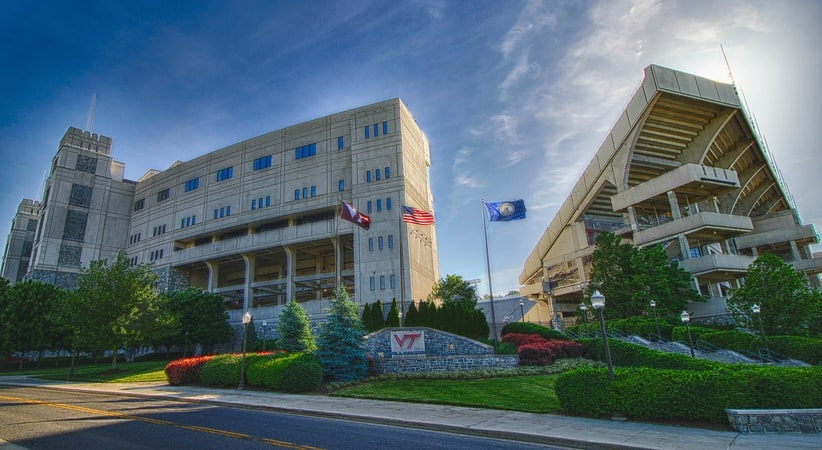
Stadium in Blacksburg, Virginia. Lane Stadium is a college football stadium in the eastern United States, located on the campus of Virginia Polytechnic Institute and State University in Blacksburg, Virginia. The playing surface of the stadium is named Worsham Field. The home field of the Virginia Tech Hokies of the Atlantic Coast Conference, it was rated the number one home field advantage in all of college football in 2005 by Rivals.com. In 2007, it was ranked #2 on ESPN.com's "Top 10 Scariest Places To Play." The stadium is named for Edward Hudson Lane, a former student, local businessman, and Virginia Tech booster, while the playing surface is named for Wes Worsham, a university donor and booster.
From 1982 to 2014, Lane Stadium had the highest elevation of any Football Bowl Subdivision stadium in the eastern United States, at 2,057 feet (627 m) above sea level. That distinction now belongs to Kidd Brewer Stadium of Appalachian State University, at 3,333 feet (1,016 m). (The highest field in FBS is at Wyoming's War Memorial Stadium, at 7,215 feet (2,199 m).)[1]
Address: 285 Spring Rd, 24061-1023 Blacksburg
Hahn Horticulture Garden
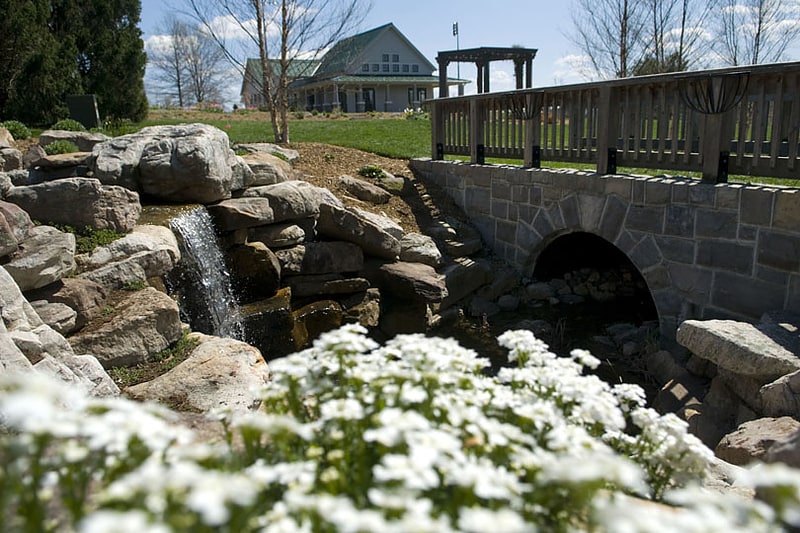
Botanical garden in Blacksburg, Virginia. The Peggy Lee Hahn Horticulture Garden, formerly the Virginia Tech Horticulture Garden, is a horticulture garden located on the Virginia Tech campus on Washington Street SW, Blacksburg, Virginia, United States. The largest public garden in western Virginia, it is open daily without charge.
The garden was established in 1984 by Dr. Robert Lyons, Dr. Richard Johnson and Robert McDuffie. It was renamed in 2004 to honor Mrs. Hahn and her husband, T. Marshall Hahn, former president of Virginia Tech. All features have been built and planted by students, staff, faculty, and volunteers.
Today the garden is used by students in the horticulture, landscape architecture, urban forestry, and entomology undergraduate programs. More than 50 volunteer gardeners from Blacksburg, Virginia, and the surrounding area assist at the garden throughout the year. Many of them fulfill their requirements with the Virginia Cooperative Extension Master Gardener program at the site.
Garden features include:
- Dwarf Conifer Display
- Perennial Border— More than 90 species and cultivars.
- Pond — Japanese maples with beds of tender annuals.
- Shade Beds — natives and unusual woody plants from Asia and Europe.
- Stream Garden — over 20 species of bog and aquatic plants.
- Trident Maple Allee — Maples underplanted with perennials and annuals.
- Wisteria Arbor — wisteria and climbing hydrangea.
- Xeriscape Area
Address: 200 Garden Ln, 24061-1011 Blacksburg
English Field
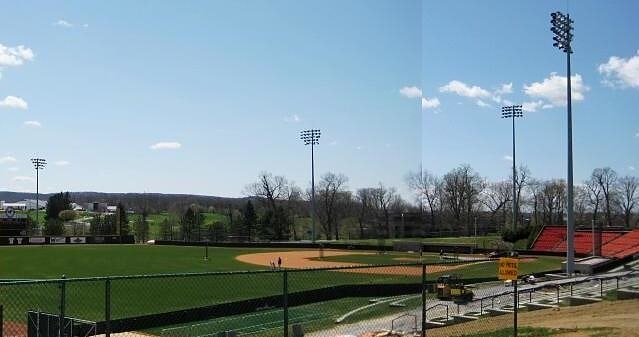
Stadium in Blacksburg, Virginia. English Field At Atlantic Union Bank Park is a baseball stadium in Blacksburg, Virginia. It is the home field of the Virginia Tech Hokies college baseball team. It was opened in 1989 and has a capacity of 1,033 in chair back seats plus additional grass-covered bank seating along the left field line known as "The Hill". English Field underwent an $20 million renovation in 2018.[3]
Address: Virginia Tech, 24061 Blacksburg
Blacksburg Farmer's Market
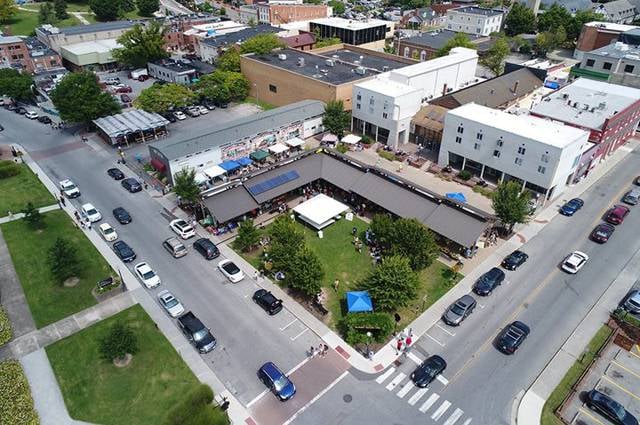
Shopping, Farmer's market, Flea market, Market
Address: 100 Draper Rd, 24061 Blacksburg
Smithfield Plantation
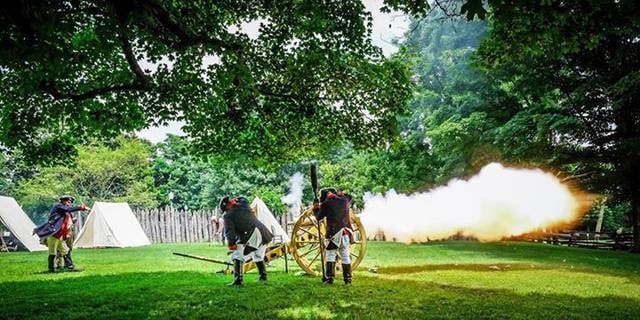
Specialty museum, Museum, History museum
Address: 1000 Smithfield Plantation Rd, 24060-5441 Blacksburg
New River Junction
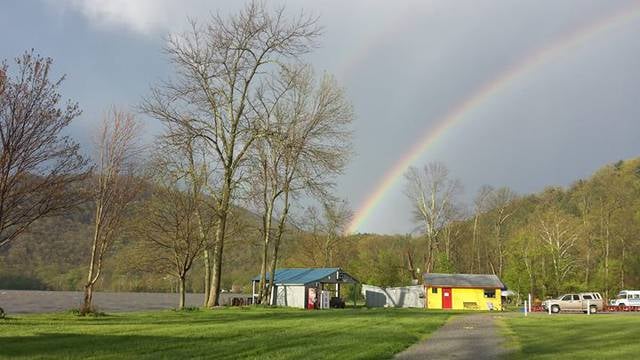
Relax in park, Watersports, Outdoor activities, Park, Tours, Campsite
Address: 2591 Big Falls Rd, 24060-1117 Blacksburg
Campus of Virginia Tech
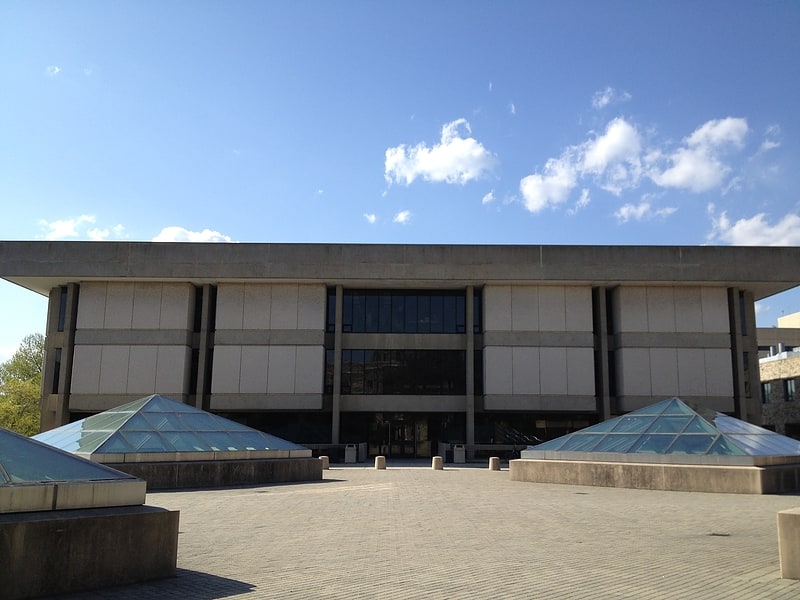
The main campus of Virginia Tech is located in Blacksburg, Virginia; the central campus is roughly bordered by Prices Fork Road to the northwest, Plantation Road to the west, Main Street to the east, and U.S. Route 460 bypass to the south, although it also has several thousand acres beyond the central campus. The Virginia Tech campus consists of 130 buildings on approximately 2,600 acres. It was the site of the Draper's Meadow massacre in 1755 during the French and Indian War.[4]
Solitude

Building in Blacksburg, Virginia. Solitude is a historic home located on the campus of Virginia Polytechnic Institute at Blacksburg, Montgomery County, Virginia. The earliest section was built about 1802, and expanded first in circa 1834 and then in the 1850s by Col. Robert Preston, who received the land surrounding Solitude from his father, Virginia Governor James Patton Preston. Dating back over 200 years, Solitude is the oldest building on the Virginia Tech Blacksburg campus.
It is a two-story, "L"-shaped, five bay, log and frame dwelling with a hipped roof. Mid 19th century modifications gave the farmhouse a Greek Revival look. Also on the property are the contributing stone spring house with log superstructure and an outbuilding built in about 1844 and renamed in 2019 by the Virginia Tech Board of Visitors as the Fraction Family House at Solitude. This new name recognizes its usage as a dwelling for the largest enslaved population living on the site and symbolically recognizes all enslaved at Solitude. In 1872, the 250 acre Solitude farm became the part of the central campus of Virginia Agricultural and Mechanical College, serving primarily as the college's farm. The farm house, after the death of its owner, Robert Taylor Preston, in the following decade, served as a college infirmary from 1882 to 1886. It, as well as the Fraction Family House, was then used as faculty housing for the next 60 years. In the 1940s it briefly was a clubhouse for returning World War II veterans who lived in a trailer park surrounding the building while attending Virginia Polytechnic Institute. At that time, dances regularly were held in Solitude's two front parlors. In the 1960s and 1970s, Solitude was used by the Hokie Club in addition to housing faculty in two apartments. Academic programs started using the building in 1974. For some time, Solitude housed a human nutrition and food laboratory and interior design studios and offices. Its last occupant was the Appalachian Studies Program, which has returned following the restoration of the building. Also located in the building is the Henry H. Wiss Center for Theory and History of Art and Architecture. Solitude had been vacant for many years prior to a $1 million restoration that began in July 2010 and lasted half-a-year. Much of the project was funded by the Mary Morton Parsons Foundation of Richmond, Va.
The house is situated in a landscaped park adjacent to the central campus of Virginia Polytechnic Institute. It was listed on the Virginia Landmarks Register in 1988 and was added to the National Register of Historic Places in 1989.
After Solitude's listing on NRHP, decade-long research and archaeology commenced to further study the main house, property, and overall site to extrapolate further historical information and evaluate what would be needed to restore the house and outbuildings. These efforts culminated in a 2000 Master's thesis by Michael Pulice, a then-Master's of Science candidate in Virginia Tech's Architecture Department, now the chief architectural historian for the Western Regional office (Salem, VA) of the Virginia Department of Historic Resources. Pulice concluded in his thesis that the remaining log outbuilding, long believed to be either a doctor's office or kitchen, is a surviving slave cabin and servants quarters.[5]
Amiss-Palmer House
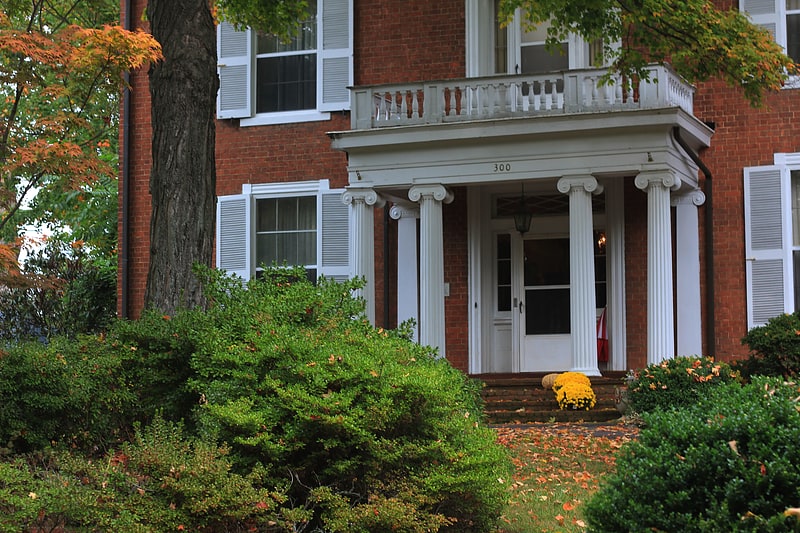
Amiss–Palmer House, also known as the Palmer House, is a historic home located at Blacksburg, Montgomery County, Virginia. It was built the 1850s, and is a two-story, three-bay brick house with a hipped roof and pattern-book Greek Revival style elements. These elements include the front portico and frieze. It has a traditional double-pile center-passage form. Also on the property are the contributing kitchen; two-story, three bay, log house; and a meat house.
It was listed on the National Register of Historic Places in 1989.[6]
Phillips-Ronald House
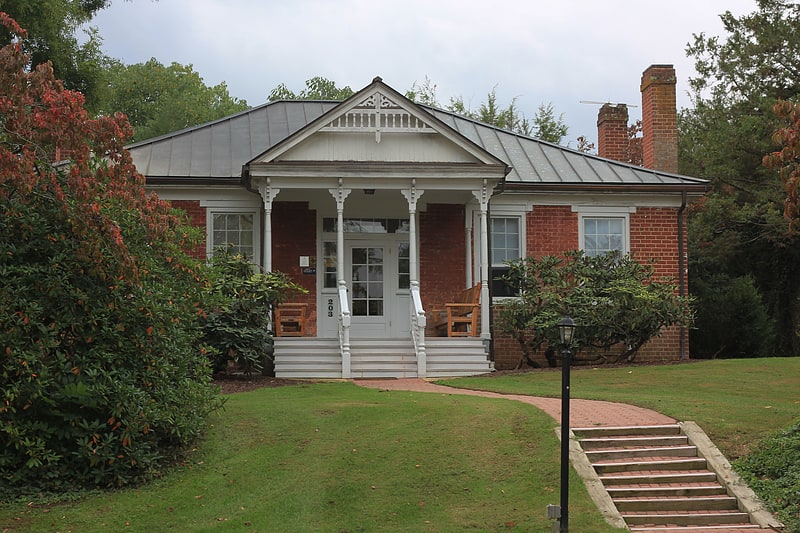
The Phillips–Ronald House, also known as the Carrington Lybrook House and Five Chimneys, is a historic home located at Blacksburg, Montgomery County, Virginia. It was built in 1851–1852, and is a one-story, brick dwelling with a hipped roof and double-pile, central-passage plan. It features a late-19th century, three-bay central entrance porch with sawn brackets and spindles in the gable and slender turned posts. Also on the property is a contributing frame garage.
It was listed on the National Register of Historic Places in 1989.[7]
Odd Fellows Hall
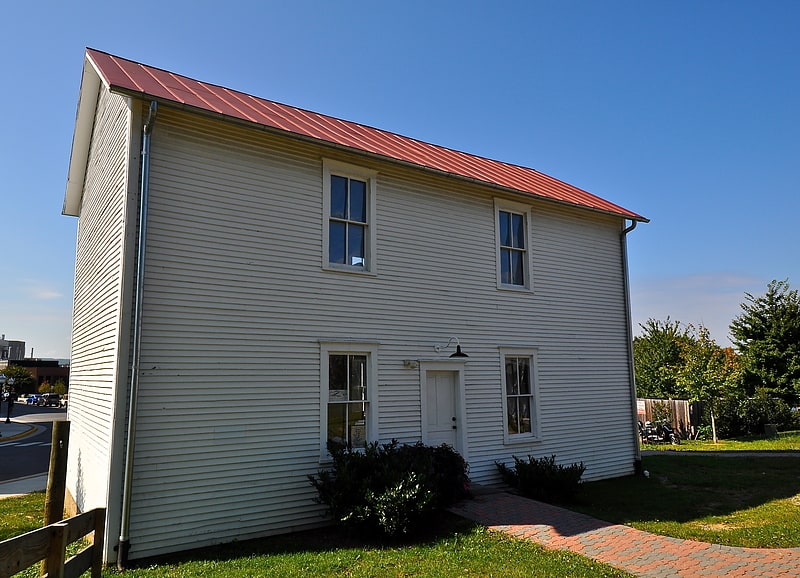
The Odd Fellows Hall, also known as Tadmore Light Lodge, No. 6184, is a historic Grand United Order of Odd Fellows meeting hall located at Blacksburg, Montgomery County, Virginia. It was built in 1905, and is a two-story frame structure clad in painted weatherboard siding. It has a standing seam metal gable roof. The building served throughout the early- to mid-20th century as the social center of the local African-American community.
It was listed on the National Register of Historic Places in 2005.[8]
Address: 203 Gilbert St, 24060 Blacksburg